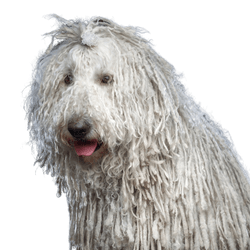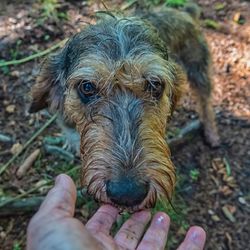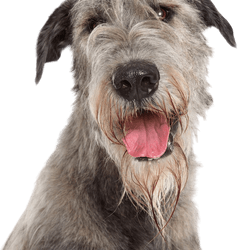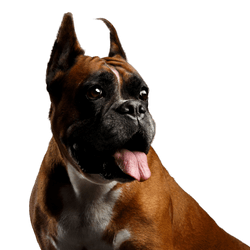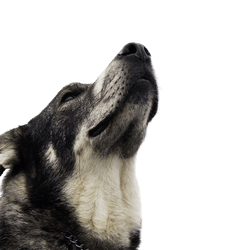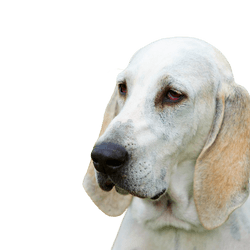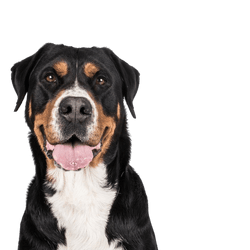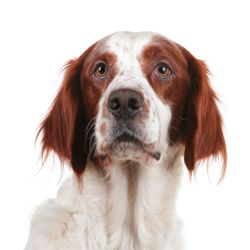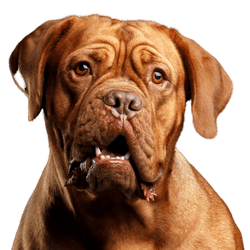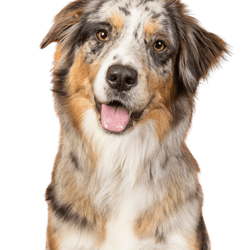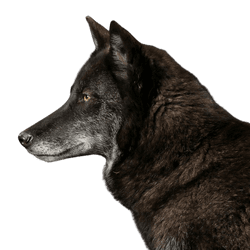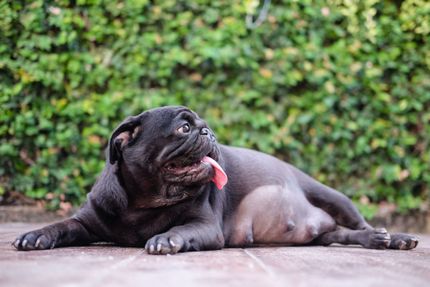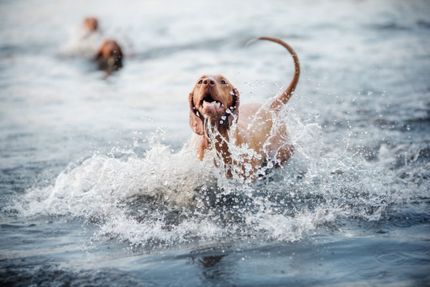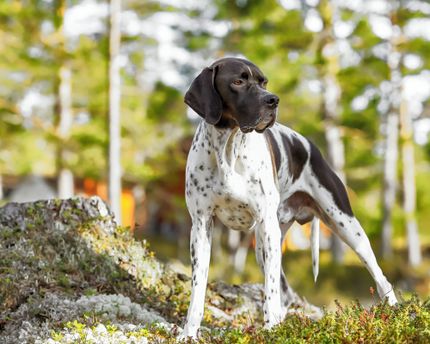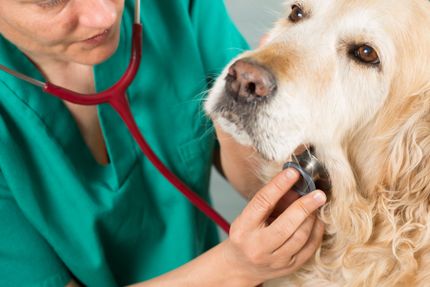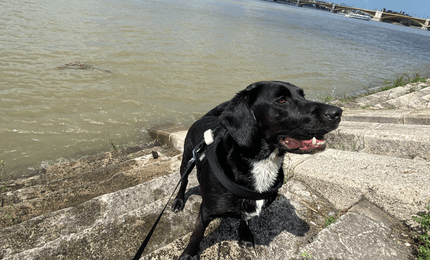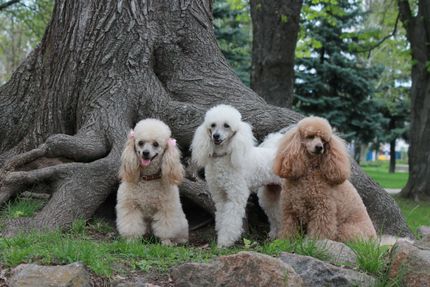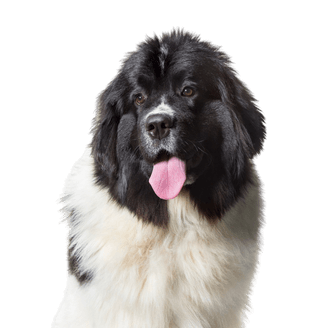
Newfoundland Breed description: Character & Co
Newfoundland
Facts & Origin
As the name suggests, the Newfoundland dog's home is Newfoundland, an island on the Canadian east coast. The exact roots of this dog breed are not known, but it is believed that they originated out of the crossing of the native Indian dog breed and the dogs of the first European settlers. The Indians were in this case the Micmacs and Beothuks. The Newfoundland has a dense undercoat, which indicates Arctic sledge dogs as their additional ancestors. In former times it was assumed that the black bear dog brought over by the Vikings left its traces in the Newfoundland's genetic constitution. For a while, the Vikings settled down in Newfoundland around 1100. Today, there are doubts about this theory though.
The ancestors of the Newfoundland had a great love for water, a weatherproof coat and a robust build. They helped the Indians with fishing and with all other work. As draught and water dogs they had to be able to carry heavy loads. These characteristics are also found in the Newfoundland. This dog breed was first mentioned in the 18th century in the diary of the British Captain Cartwright. Following this, the Newfoundlander became known as a strong working and rescue dog. The English and French middle and upper classes liked to acquire this dog breed from the New World. Stories were spread about the heroic Newfoundlanders who saved lives at sea. In 1860, the Newfoundlander made its first appearance at a dog show in Birmingham. In 1875, the English Kennel Club started to keep a breed registry for Newfoundlanders. Eleven years later, in 1886, the "Newfoundland Club" was founded in England.
What are the breed characteristics of the Newfoundland dog?
The cynological umbrella organisation FCI categorises the Newfoundland under group 2 "Pinscher and Schnauzer, Molossoids, Swiss Mountain Dogs", within the section for "Molossoids" and in the subgroup "Mountain Dogs".
- FCI Group 2
- Section 2.2
- Standard No. 50
- no work test
The impression of a slow, lethargic dog due to his massive body is deceptive. The Newfoundlander is an extremely agile working dog. If you want to buy a Newfoundlander, you should be able to offer it a large home, garden and take them on many walks. The Newfoundland loves to swim, so you should let him jump into the water from time to time. Excessive heat and sunshine do not do him any good.
Newfoundlanders were used by settlers as guard dogs, draught dogs and working dogs. They pulled sledges and guarded the camps afterwards. Thanks to their coat they survived the extreme temperatures of the north very well. They also helped with fishing by pulling the heavy nets ashore. Their long, waterproof coat protected them. Their soft undercoat kept them warm in the freezing cold winters. Their long, muscular bodies enabled the Newfoundlanders to do the work demanded of them. Their head is robust, the muzzle short and square-shaped, the ears are quite small though. Their paws have webbed skin between the toes. As a water dog, the Newfoundland has a typical oily and water-repellent coat.
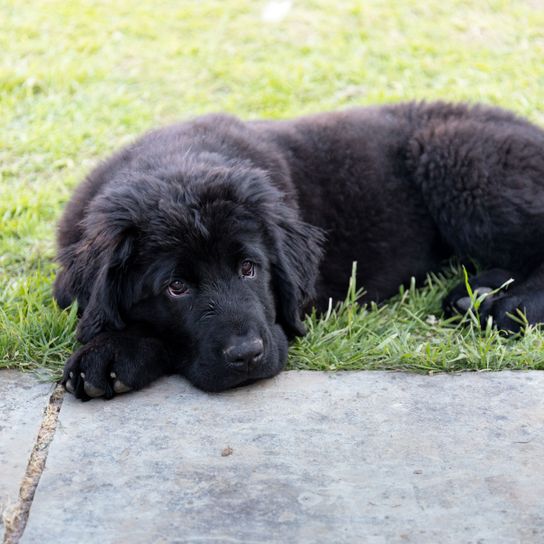
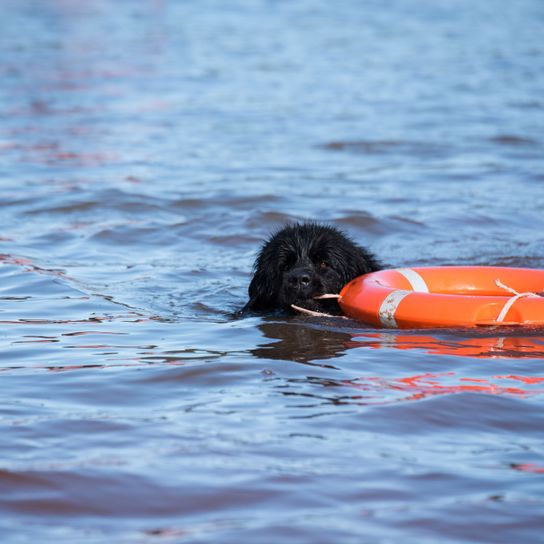
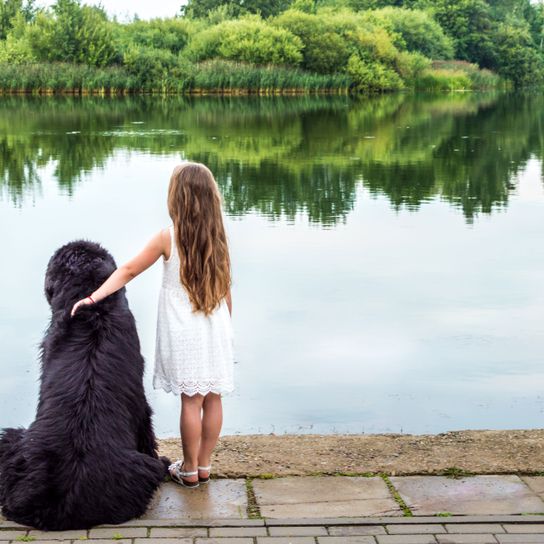
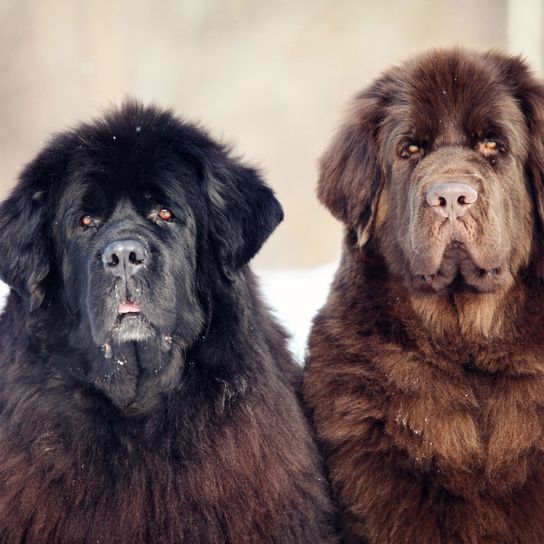
| Alternate Name | Newfoundlander |
| Origin | Canada |
| Life expectancy | 8 - 10 years |
| Care requirements | high-maintenance |
| Activity level | average |
| FCI group | Molossian type |
| AKC group | working group |
| KC group | working group |
Newfoundland mixes
Attitude, character and temperament of the breed
What are typical characteristics of the Newfoundland?
The Newfoundlander is calm, affectionate and fond of children. That is why many keep them as family dogs. Especially with children they quickly become a loving teddy bear. In contact with the little ones they keep their size and strength under control and show their great tolerance threshold. They guard their family faithfully. Should danger threaten their pack, the cuddly facade is torn down. Nevertheless, they do not approach strangers in an aggressive way. They also don't bark a lot.
Newfoundland puppies need a loving, but consistent education. Sometimes, these dogs can have a mind of their own and tend to be quite stubborn. You can rely on their intelligence when you train them, but they will not always do what you ask of them. Newfoundland dogs can be overly friendly towards friends and strangers sometimes and might throw themselves at them with their imposing size. A consistent upbringing should prevent this behaviour.
Character
Usage
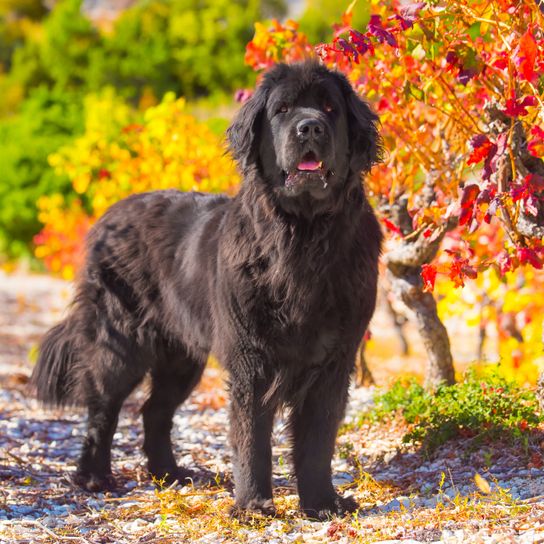

Health and breeding information
What are typical diseases of the Newfoundland?
Newfoundland dogs tend to suffer from a rotation of their stomachs, vein diseases, eye problems, kidney diseases, heart diseases and hip joint dysplasia. Heart diseases can be caused by a congenital taurine deficiency. Some people place too much emphasis on a dense coat and plush appearance in Newfoundland breeding. These animals are particularly bad at coping with intense heat.
What should be considered in regards to Newfoundland breeding?
This is a large and fast growing dog breed. Therefore, diseases in the hip and elbow area occur more frequently. Also bone cancer is a danger for the Newfoundland dog. Newfoundland crossbreeds are also very popular in Germany, especially with the German Shepherd or with other Swiss Mountain and Cattle Dogs. Mongrels with Swiss Mountain and Cattle Dogs are prone to suffering joint diseases. You should therefore make sure that the Swiss Mountain and Cattle Dog is taken from a certified breeder.


Appearance and coat of the Newfoundlander
Their colour variations include:
- black
- white-black
- brown
Their dense coat makes the Newfoundland appear bigger than they actually are. Beside the mentioned colour variations there are also colours that officially are not desired in some countries. The grey Newfoundland for example corresponds only with US standards. Some dogs have white markings on their chest, paws or on the tip of their tail. On the head the coat is rather short, otherwise dense, of medium length and smooth.
What is the average size of the Newfoundlander?
The males can reach a height of 71 cm measured at the withers. For bitches this is a height of 66 cm and therefore they are considerably smaller, bur still considered a giant dog breed nonetheless.
How much does a Newfoundlander weigh?
- Males: 68 kg
- bitches: 54 kg
What is the average age of a Newfoundlander?
On average, Newfoundland dogs reach an age of 7 to 10 years. However, some dogs can live much longer. Unfortunately though, especially big dog breeds do not reach a high age.
| Fur length | long |
| Fur | - |
| Ear shape | Triangle |
| Tail | fanned out |
| Anatomy | massive, hefty |
| Size ♀ | 63 - 69 cm |
| Weight ♀ | 45 - 55 kg |
| Size ♂ | 69 - 74 cm |
| Weight ♂ | 60 - 70 kg |
| Suitable For | Children |
Colors

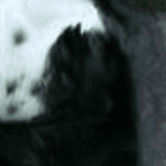

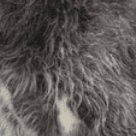



Known Diseases
Eye diseases
Often occur with allergies and intolerances.
Skin inflammations
Can be hereditary in certain breeds.
Hip dysplasia (HD)
The hip dysplasia or hip joint dysplasia of the dog (HD) is a maldevelopment of the hip joint.
Gastric torsion
Gastric torsion is a disease in which the stomach rotates around its own longitudinal axis. The cause of the disease is not known.
Kidney disease
Symptoms of kidney disease in dogs: increased urination (polyuria) increased water intake. Inflammation of the mucous membrane of the mouth. Loss of appetite
Vein diseases
Most venous diseases are of minor importance in the dog
FAQ
-
Newfoundlands are considered a trainable breed.
-
On average, a Newfoundland needs a lot of exercise. He feels very comfortable when he has a large garden to romp and sleep.
-
The Newfoundland is an ideal family dog and loves people and children.
-
Newfoundlands are one of the largest dog breeds and originate from Germany. They have long fur and floppy ears.
Other large dogs
Useful Articles
You can find articles that might interest you in the dogbible blog to match your favorite breed.
Visit our magazineto stay up to date on dog trends.
To find out more, view our Privacy Policy
Find here the breed that suits you and find out what character traits it has. Here you can also learn more about the origin, size and weight of your favorite breeds.
Matching your favorite breed, you'll find articles that might interest you on the dogbible dog blog.
Lake Garda with dog - Dog runs, Bathing place for dogs, Dog beach on Lake Garda
Eye discharge (epiphora) in dogs - causes, control
Hip joint and elbow dysplasia in dogs
Respiratory diseases in dogs - bronchitis and co recognize and combat





